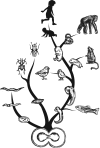Sleep and Development in Genetically Tractable Model Organisms
- PMID: 27183564
- PMCID: PMC4858775
- DOI: 10.1534/genetics.116.189589
Sleep and Development in Genetically Tractable Model Organisms
Abstract
Sleep is widely recognized as essential, but without a clear singular function. Inadequate sleep impairs cognition, metabolism, immune function, and many other processes. Work in genetic model systems has greatly expanded our understanding of basic sleep neurobiology as well as introduced new concepts for why we sleep. Among these is an idea with its roots in human work nearly 50 years old: sleep in early life is crucial for normal brain maturation. Nearly all known species that sleep do so more while immature, and this increased sleep coincides with a period of exuberant synaptogenesis and massive neural circuit remodeling. Adequate sleep also appears critical for normal neurodevelopmental progression. This article describes recent findings regarding molecular and circuit mechanisms of sleep, with a focus on development and the insights garnered from models amenable to detailed genetic analyses.
Keywords: Caenorhabditis elegans; Danio rerio; Drosophila melanogaster; development; invertebrate sleep; ontogeny; sleep.
Copyright © 2016 by the Genetics Society of America.
Figures



References
-
- Alam M. A., Mallick B. N., 2008. Glutamic acid stimulation of the perifornical-lateral hypothalamic area promotes arousal and inhibits non-REM/REM sleep. Neurosci. Lett. 439: 281–286. - PubMed
-
- Alchanatis M., Zias N., Deligiorgis N., Amfilochiou A., Dionellis G., et al. , 2005. Sleep apnea-related cognitive deficits and intelligence: an implication of cognitive reserve theory. J. Sleep Res. 14: 69–75. - PubMed
-
- Angriman M., Caravale B., Novelli L., Ferri R., Bruni O., 2015. Sleep in children with neurodevelopmental disabilities. Neuropediatrics 46: 199–210. - PubMed
Publication types
MeSH terms
Grants and funding
LinkOut - more resources
Full Text Sources
Other Literature Sources
Molecular Biology Databases

